May 26, 2024
Each night while we’re at dinner our cabin steward turns down our bed and leaves the ship’s newsletter and our tickets for the next day’s excursion(s) on our bed. We always look at the tickets to remind ourselves what we signed up for almost a year ago and what time we need to be ready the next day. When we looked at our tickets last night and saw “Hike to Vistas of the Iron Gates,” we thought, “A hike? Twelve-hundred-foot elevation gain? What were we thinking????” Turns out this was one of our favorite excursions yet!
Our ship docked at the Golubac Fortress, and we were two of only fourteen individuals who signed up to climb all the way to the top of that center tower!

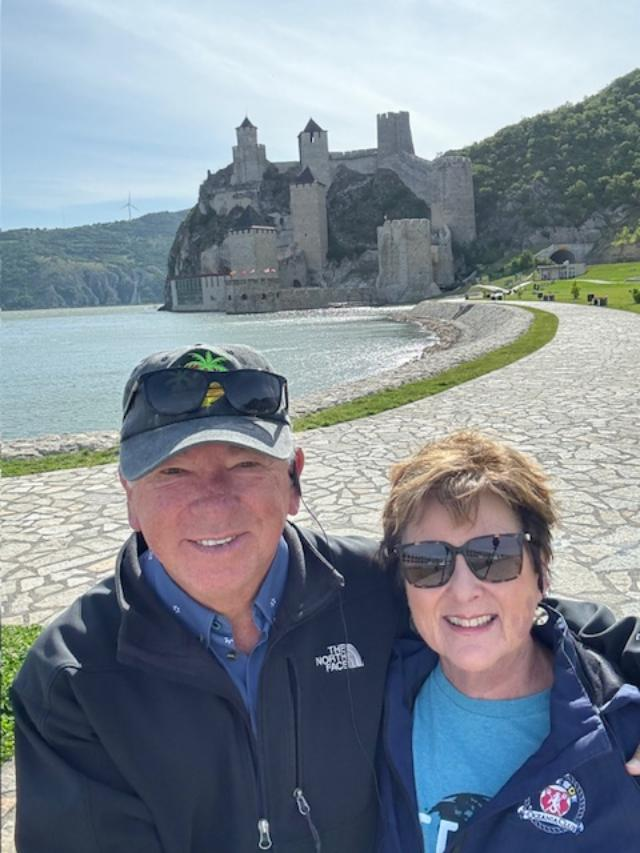
Before we began, our guide asked if anyone was afraid of hikes. Confirming we were all good, he set off across what was once a drawbridge, explaining the mote it covered was never intended for water. Instead, trespassers would have to navigate a pit of hungry wolves. Having managed that they would be faced with another, smaller pit full of sharp wooden spikes. Yikes!
“Oh, yeah, and by the way, is anyone afraid of snakes? We do have venomous snakes here at the fortress, so please just be on the lookout for them. That’s what this sign here means.” Snakes?!! You asked us about heights; no one said anything about snakes.
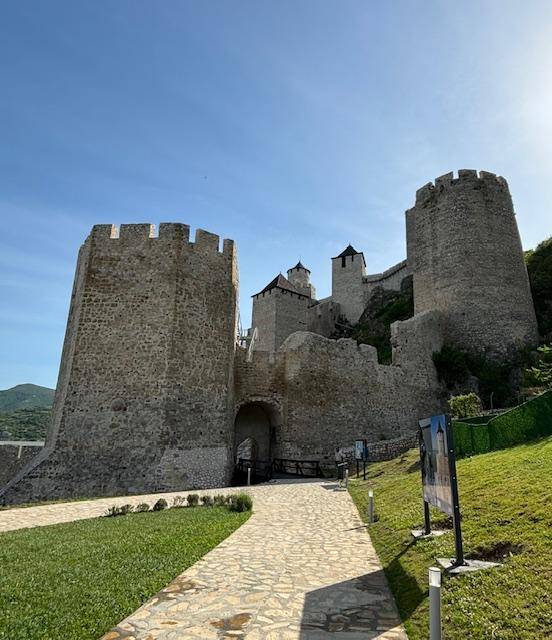


As we began our steep climb to the top up 270 less than uniform steps the wind was whipping around us. I don’t know what they were today, but our guide said 75 mph winds are quite normal here. It reminded us of both our 2017 Great Wall of China climb and our 2019 volcano encounter in Nicaragua, but considerably safer. Two additional guides joined us and the three of them spread out along the climb to be sure we arrived intact. Pam was feeling particularly grateful that daughter Kim had clued her into an incline work out a while back – great preparation for this day!
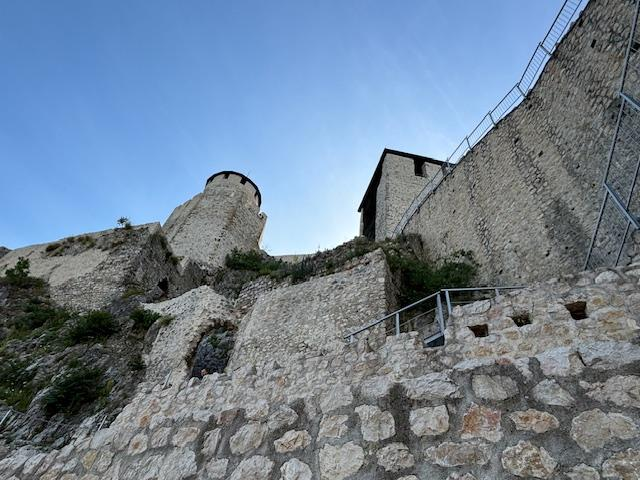
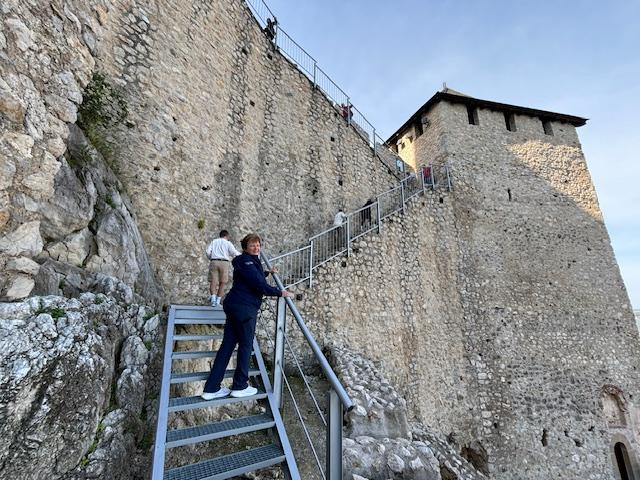
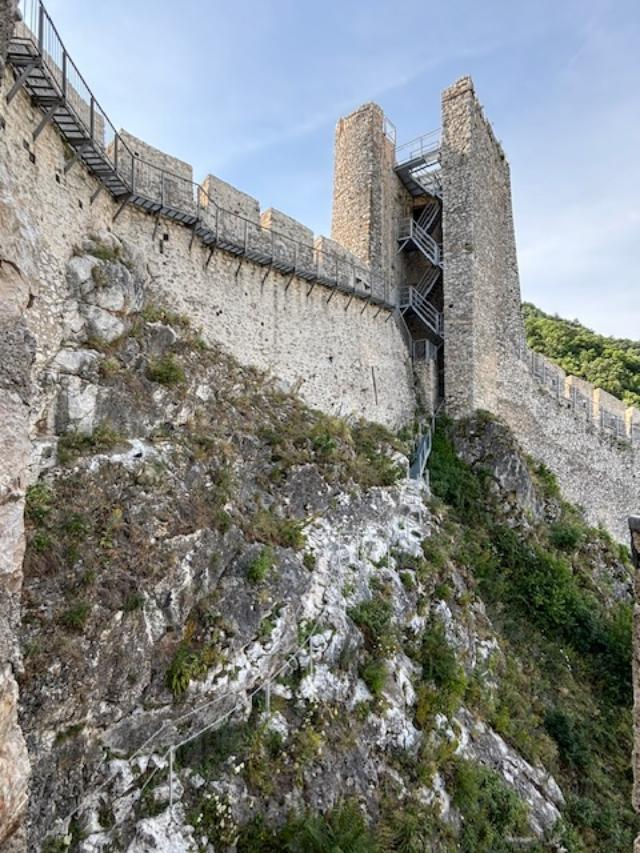
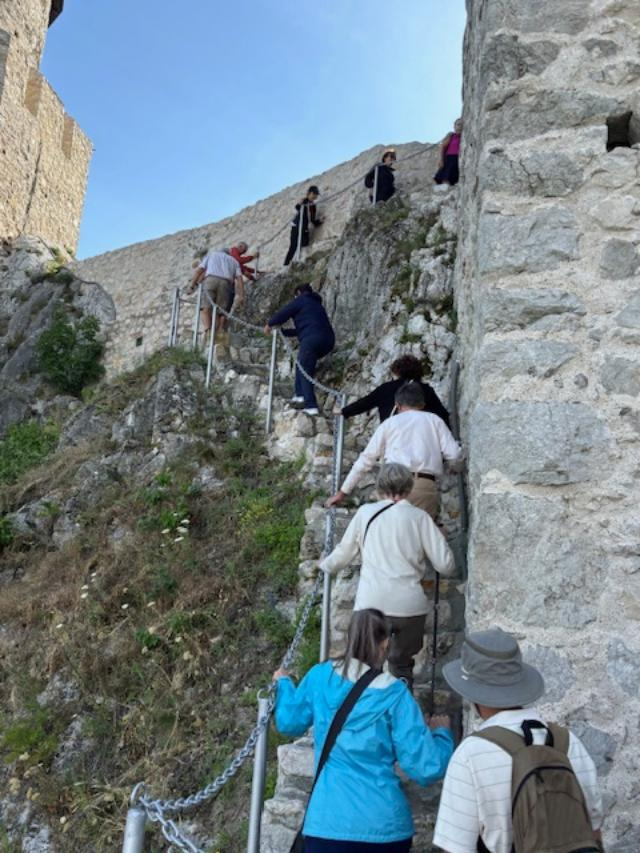
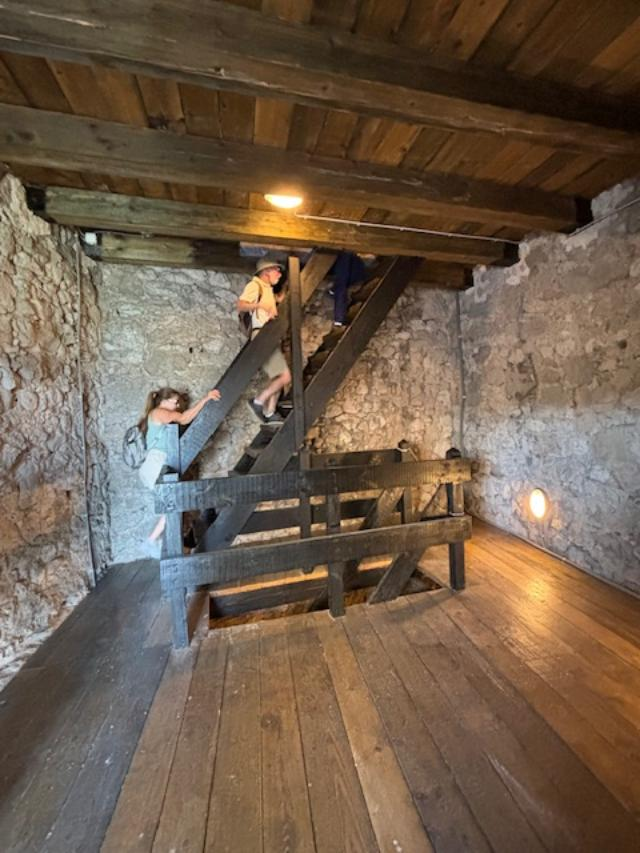
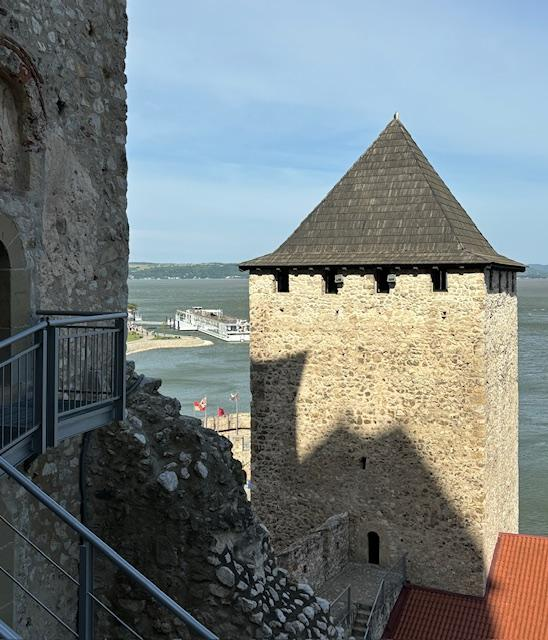
The views at the top were just as you’d expect.

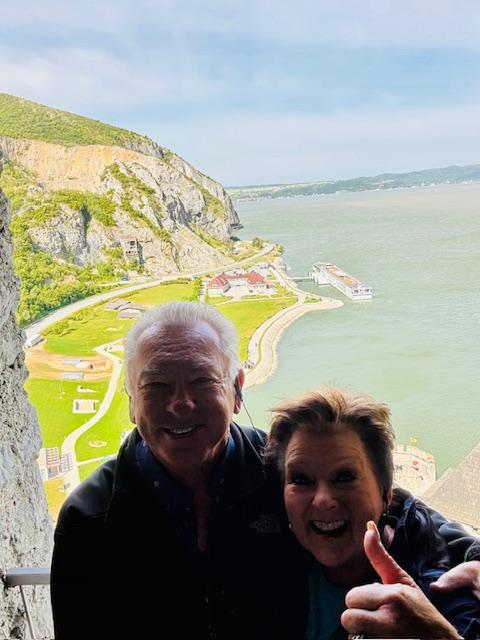
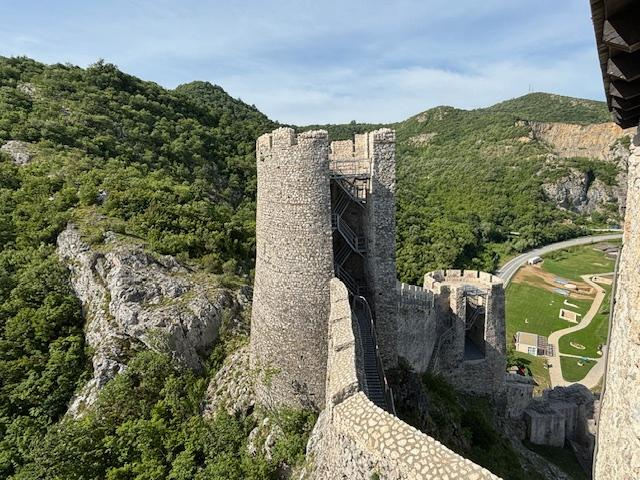
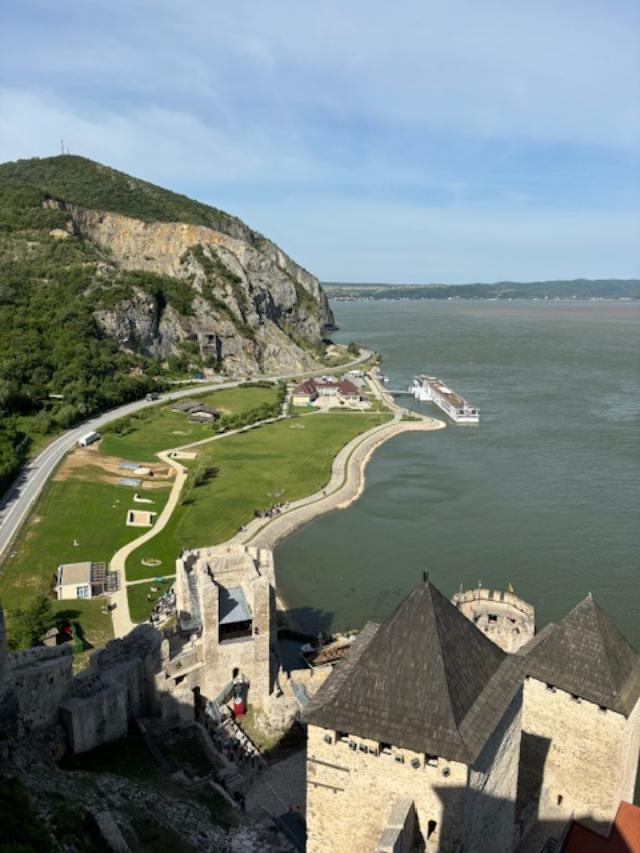
It is not known who built the fortress, bit it dates back to the 13th century. Fun fact: when it was built cement was made by mixing eggs and sand. More than 300 battles were waged here (someday Pam’s going to remember to ask a guide how they know that), but it was never conquered. This is due in part to its location directly on the river, and partly because of its construction. There were nine towers in the fortress; none of them were connected to one another or the main structure, so they would have had to have been attacked individually. During restoration they found all kinds of cannonballs, some of which are scattered about the property, and more than 9,000 arrowheads. There were poison arrowheads, fire arrowheads, arrowheads of different sizes and shapes…9,000!!!
The River Danube divides what today is Romania and Serbia, but there was a time that what is now Rumania was Hungary. A heavy metal chain was thrown across the river and secured to the rock you see in the picture below. Passage was controlled by the people in the fortress, another way to protect it from an unexpected attack. The fort you see in the picture is not the fortress we were visiting. The picture was taken from our fortress; the one in the picture is across the river.
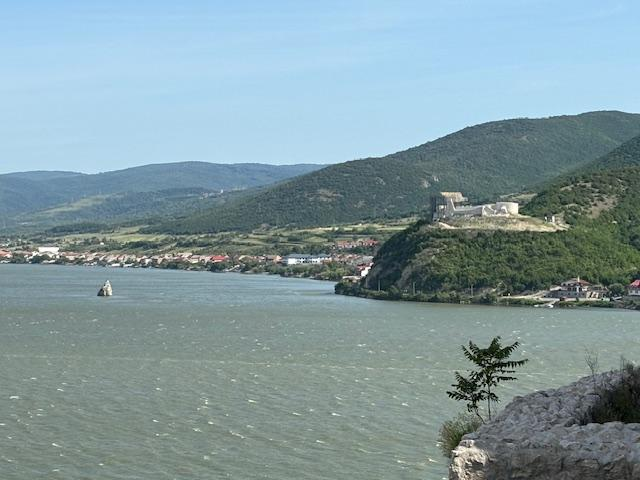
From the 1930s until 2016 or so, when reconstruction of the fortress begam, there was a main highway running through the fortress. These pictures from the Internet prove it.
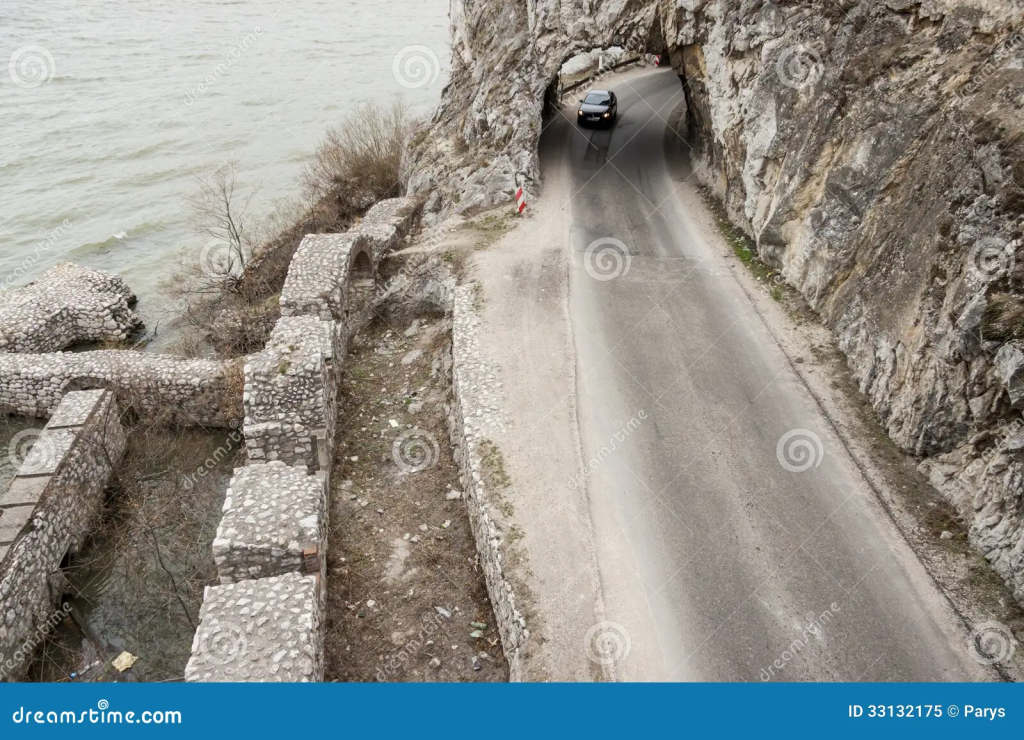
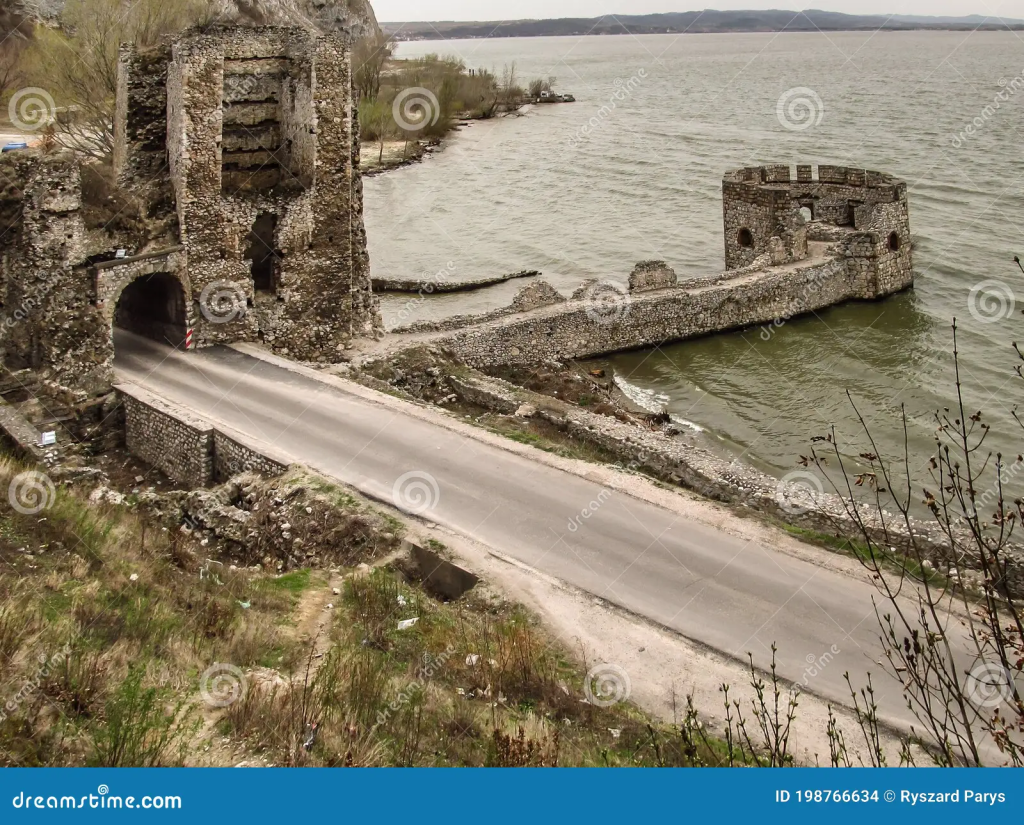
Restoration of the project was largely funded by the European Union, of which Serbia is not yet a member. Check out the before (courtesy Mr. Google) and after (courtesy Mr. Ken) pictures.
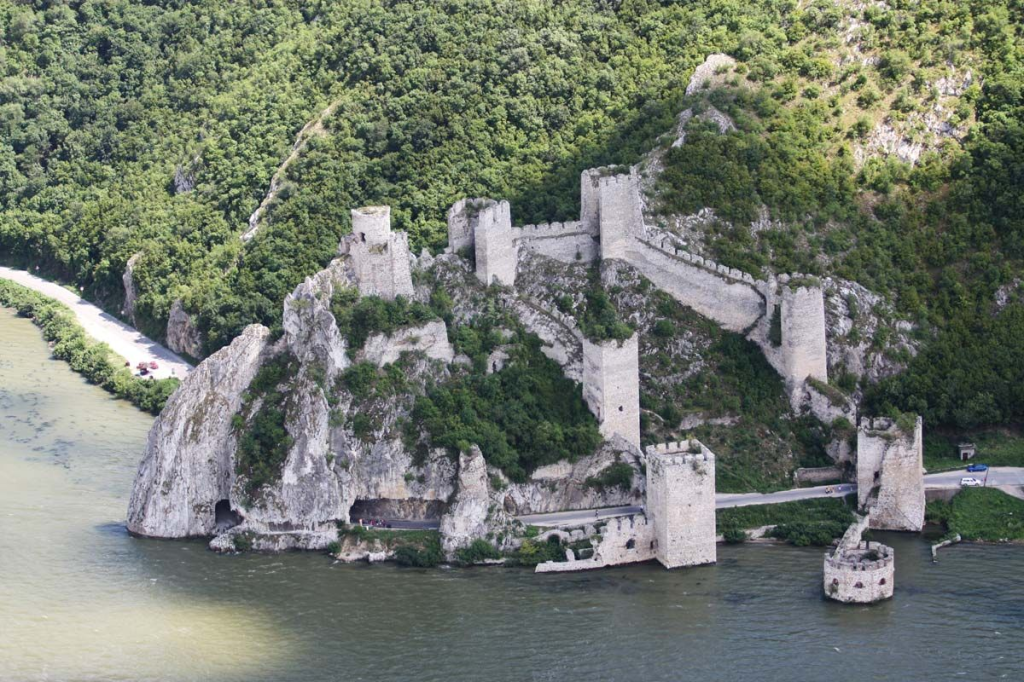

Now that we’d made it up, we had to make our way back down.
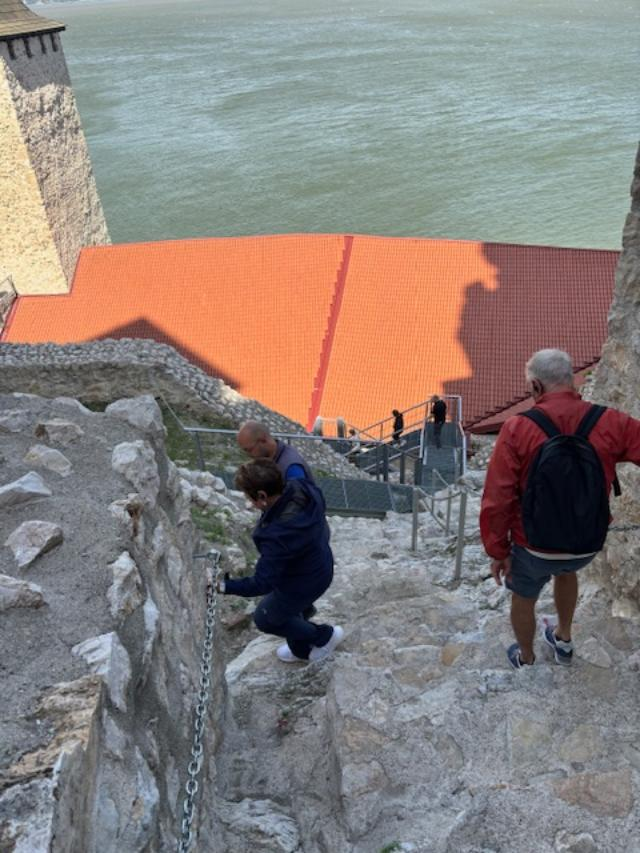
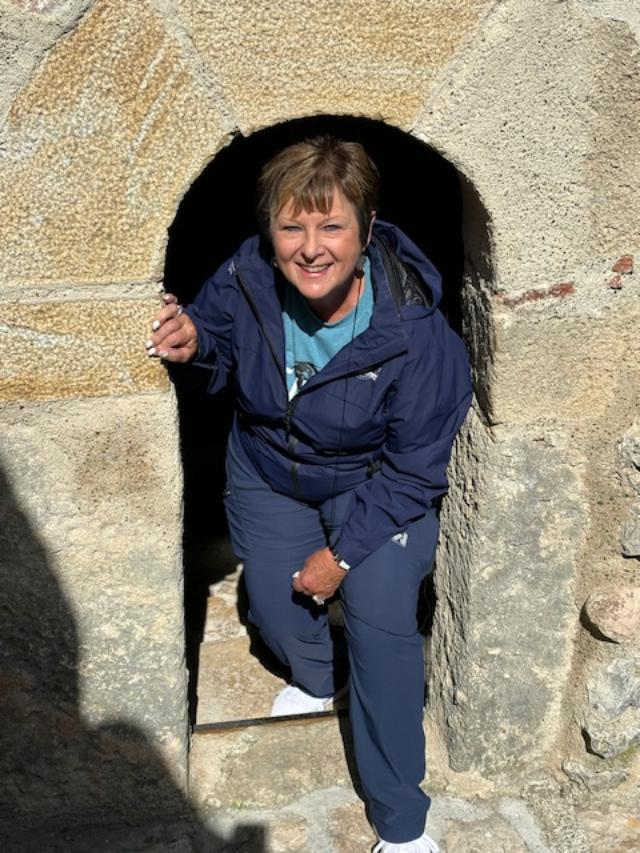
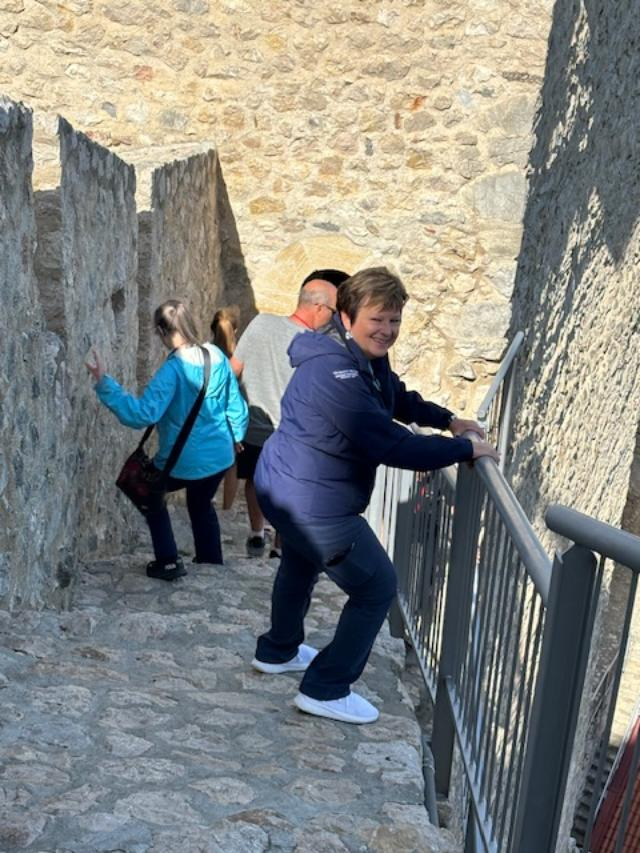
Having conquered the fortress, it was time to conquer the forest. Our hour-long drive to the Iron Gate National Park would take us through 20 tunnels.
The Iron Gate is both a national park and a geopark, meaning it has both natural and historical significance. The park includes 285,000 acres, part of which is home to what is believed to have been the largest planned settlement of the monolithic age. Archaeologists have found artifacts dating as far back as 8,000 BC. Among the many species to be found here is the white-tailed, or Serbian Eagle. Their wing spans can be up to 7′ wide. Our guide showed us this picture of one with a fox. He’s told the eagle won.

Again we were rewarded with beautiful views, this time overlooking the Iron Gate Gorge.
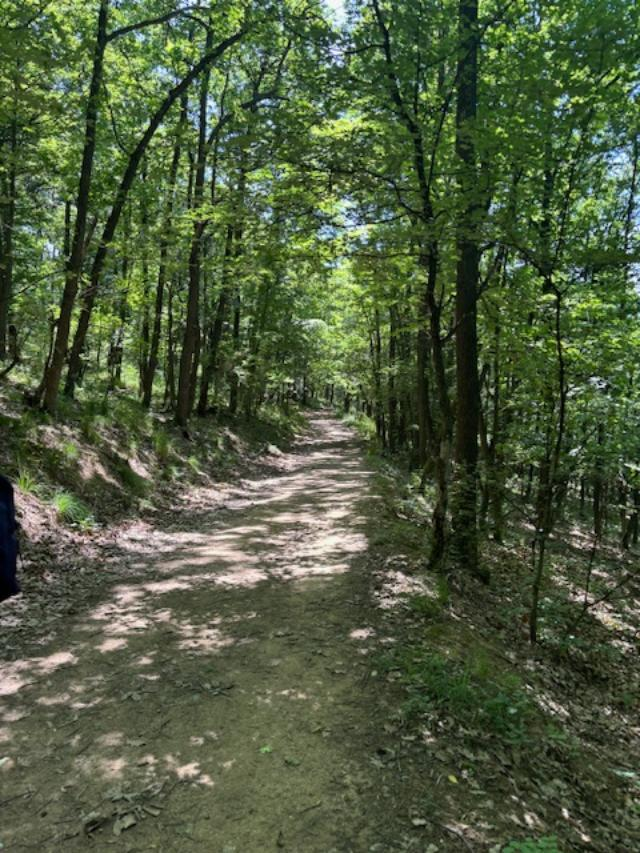
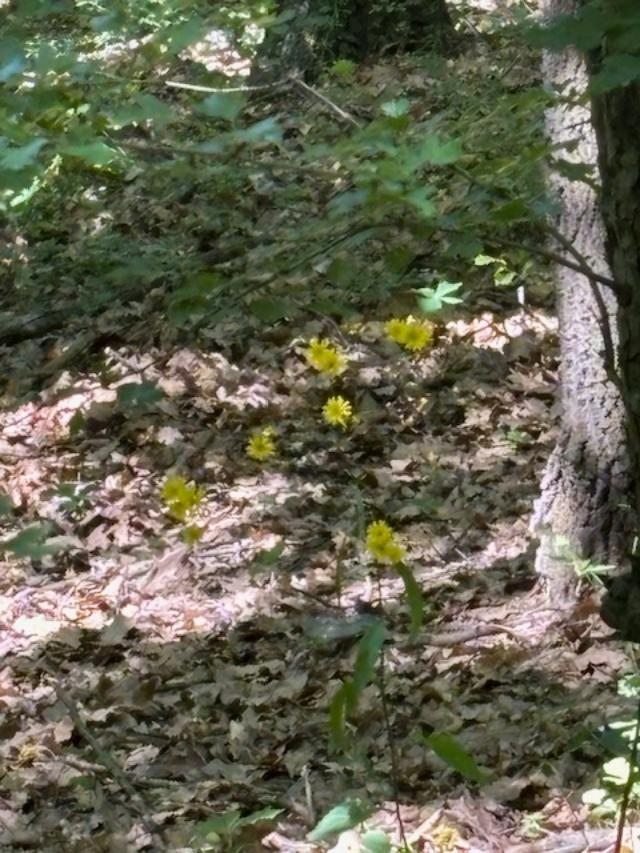

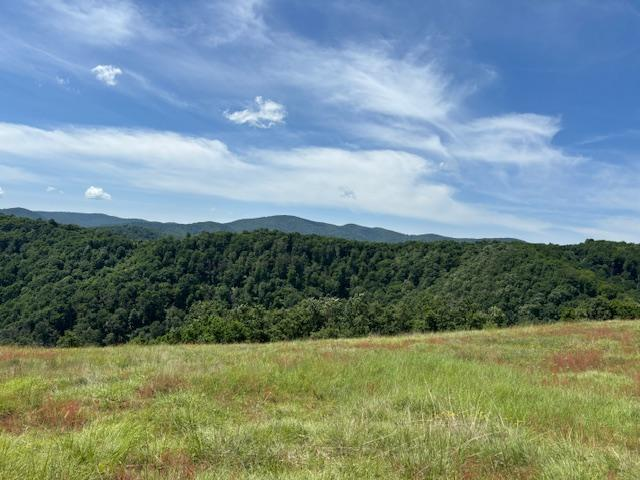
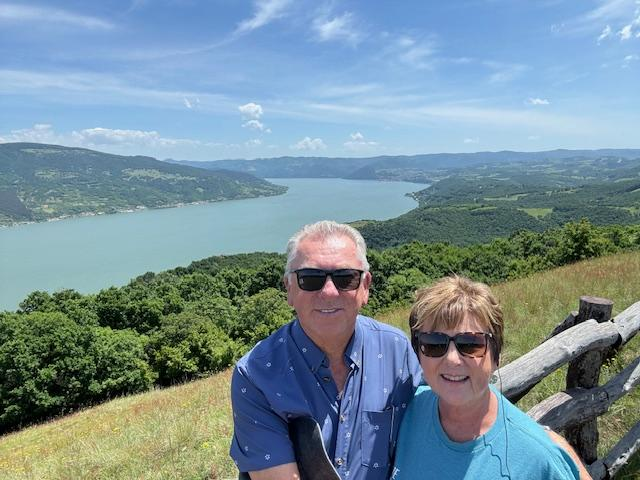

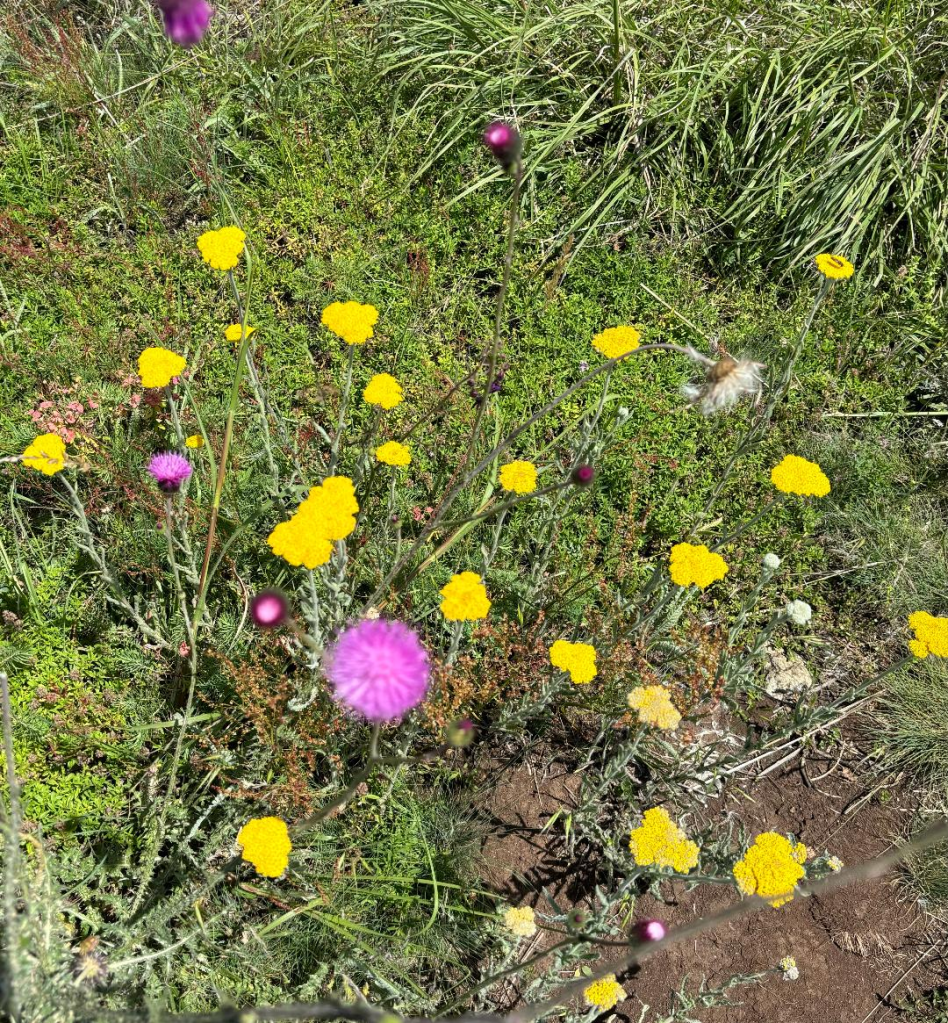
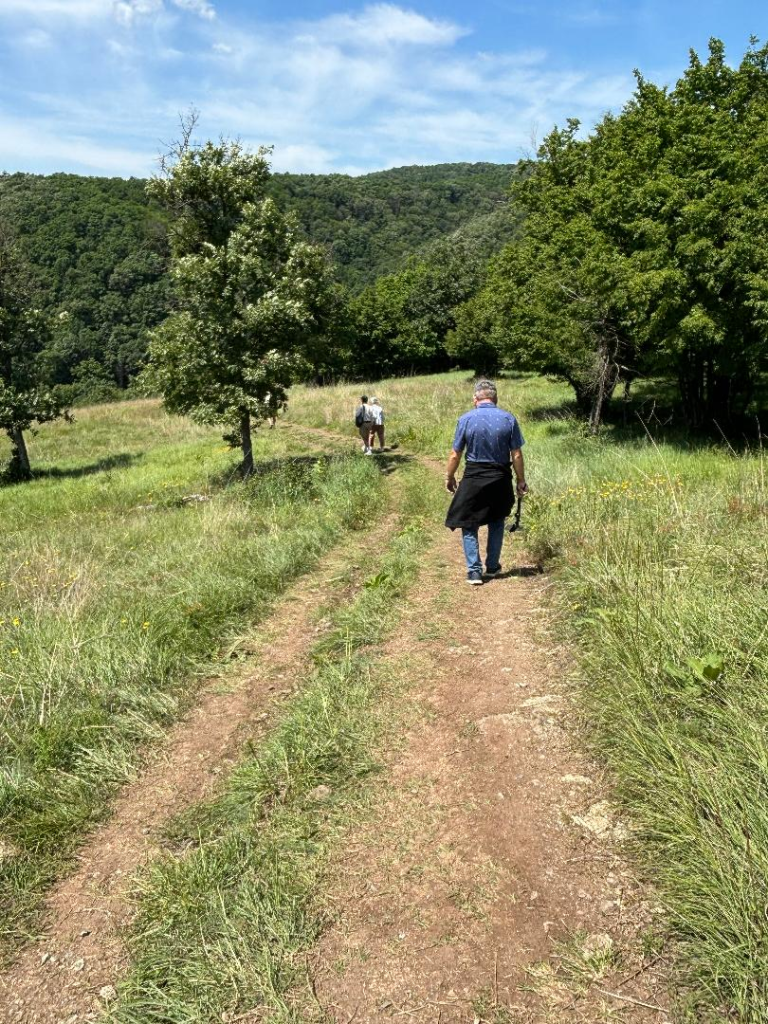
We made one last stop before returning to the ship. Misa Anastasijevic (1803-1885) made his fortune in the salt industry, becoming the second richest man in Serbia. He came from humble beginnings and both of his parents died when he was very young, but because of his literacy he became a teacher in his hometown at age 11, and by age 14 he was serving as the Customs Officer and supervisor before beginning his own business exporting salt. At the height of his career, he employed approximately 10,000 people and had 80 ships exporting his cargo. There is a hill in this area named after him. A local wood artist has created a wonderful little place to stop, enjoy the view and a traditional snack and peruse his art before continuing down the mountain. We were served honey plum brandy, a slice of apple, goat cheese, tomato slices, a bread and cheese pie, deep fried nettle leaves (yummy!) and delicious little jam-filled cookies. So good! We could see our ship in the distance making its way to our pickup point.

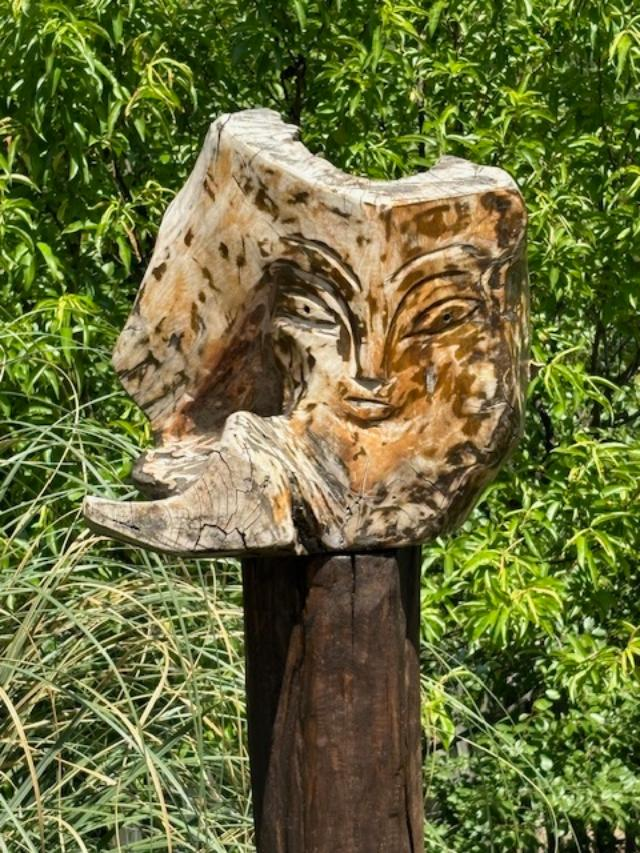

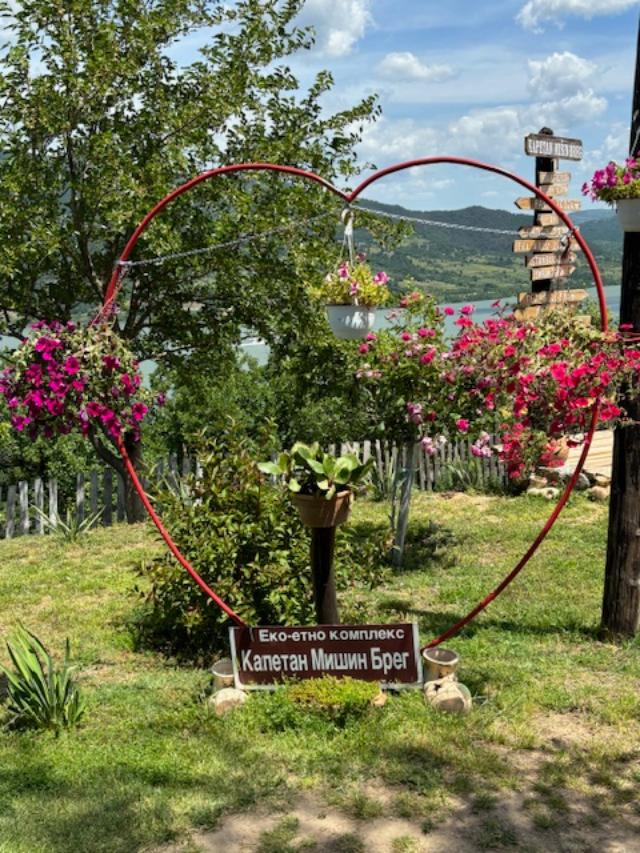
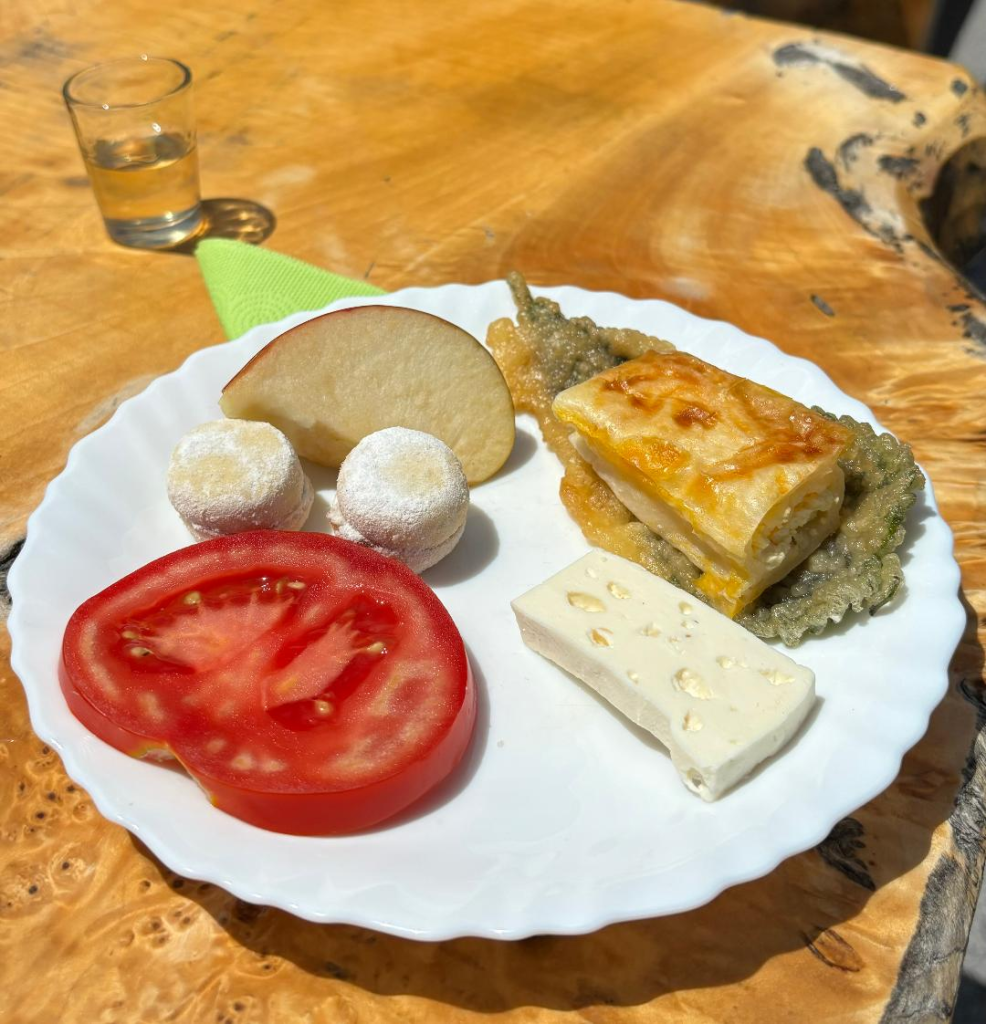
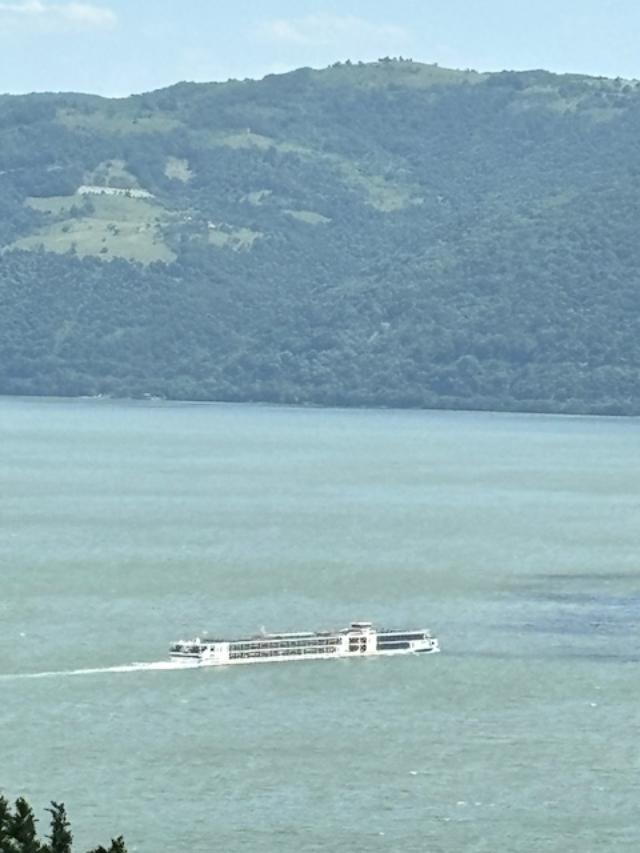
Our final treat of the day was the cruise through the Iron Gates Gorge. The Gorge forms the border between Serbia and Romania. It is 83 miles long and separates the Carpathian Mountains of Serbia from the Balken Mountains in Romania. There are a series of four increasingly narrow gorges included in the Iron Gates, and both the widest point in the Danube (a little more than 1,800 feet) and the narrowest (slightly less than 500 feet) occur within this 83 miles, as does the deepest point of the river (328 feet).
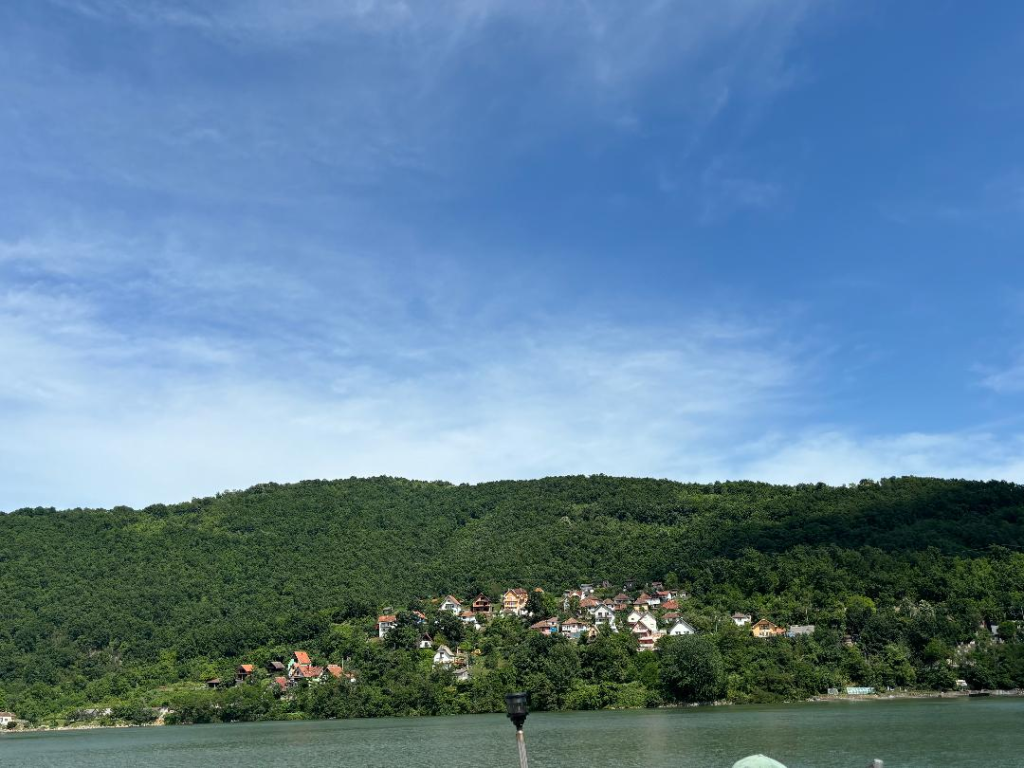

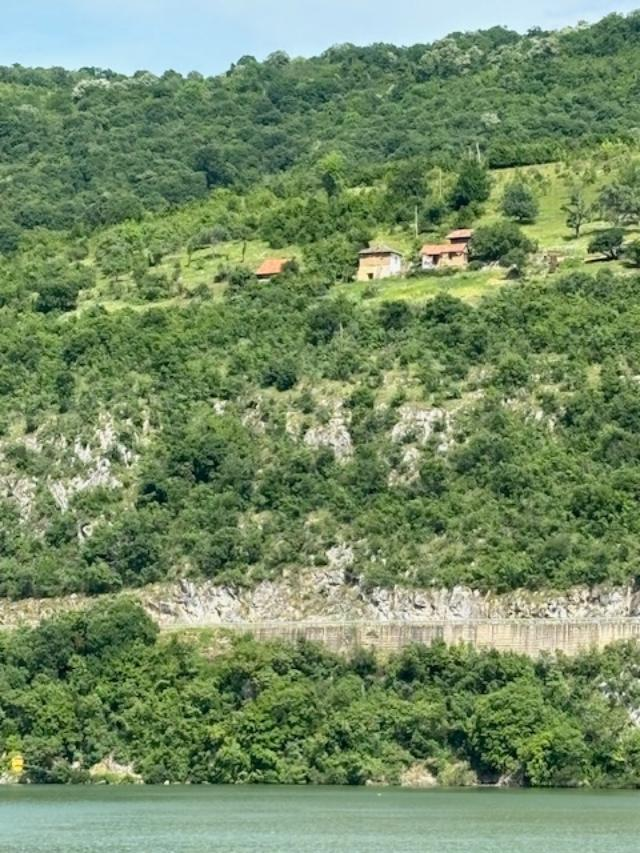

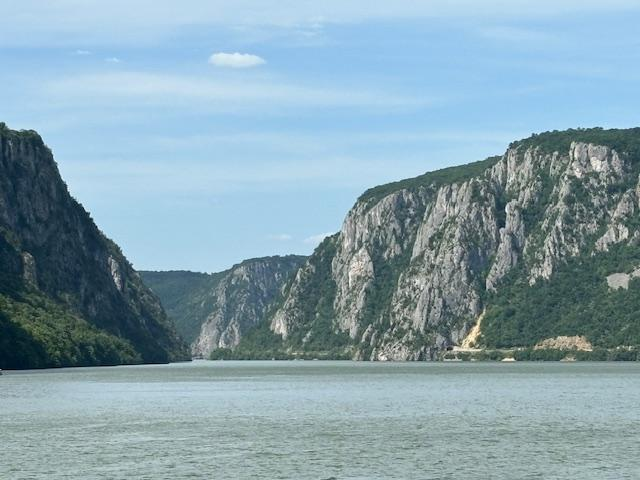
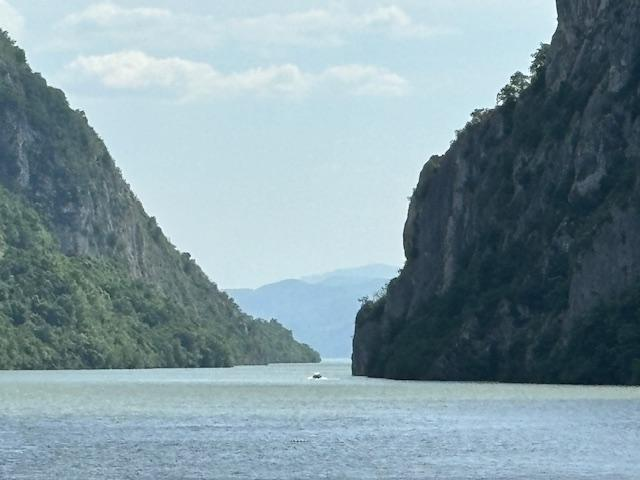
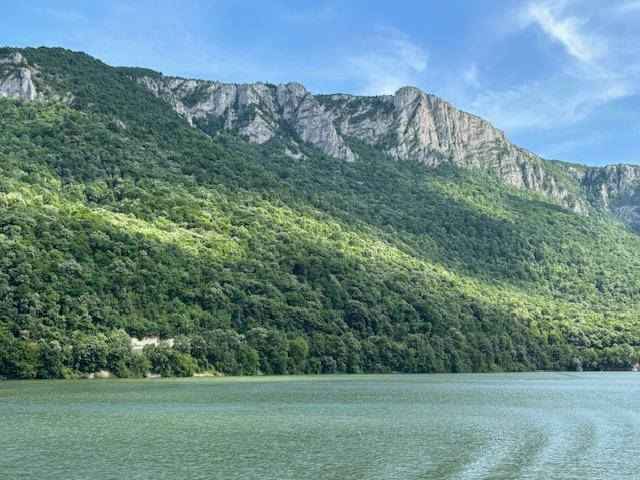
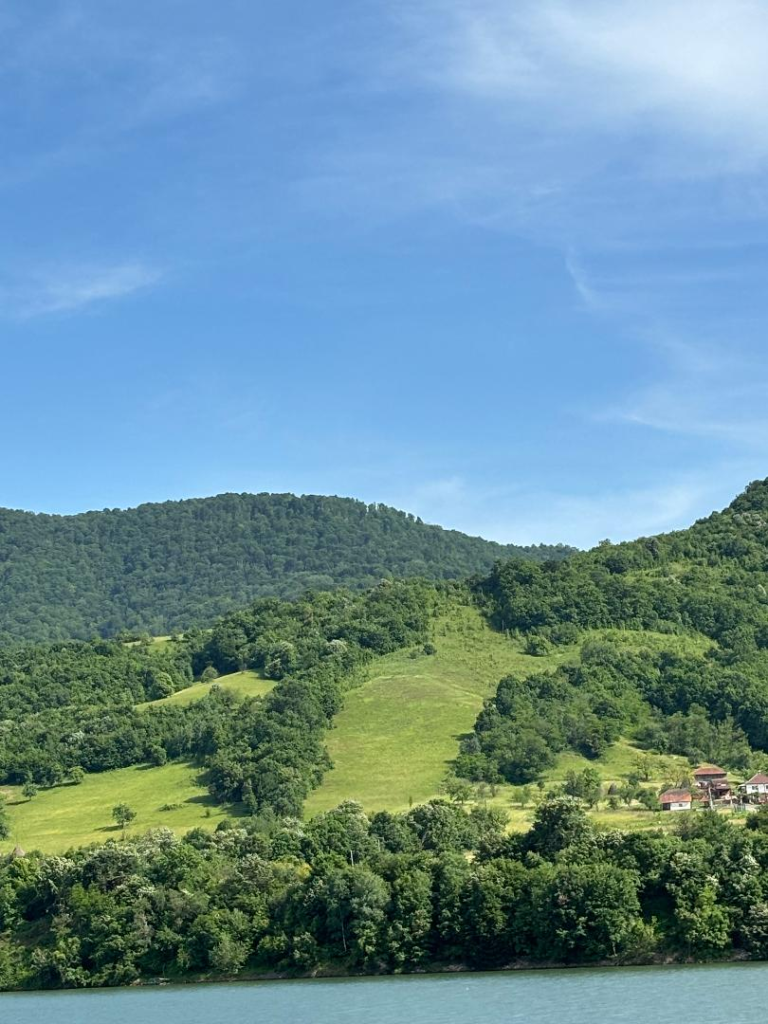

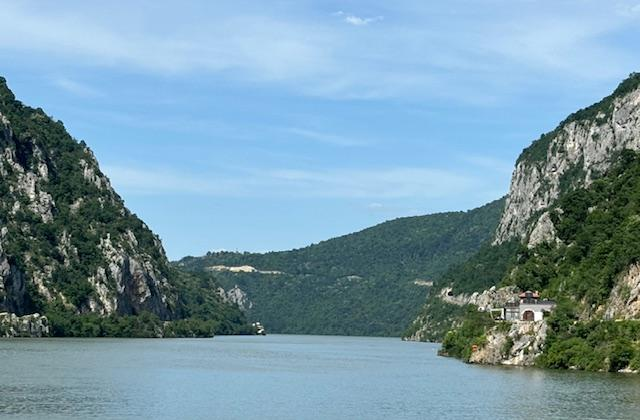
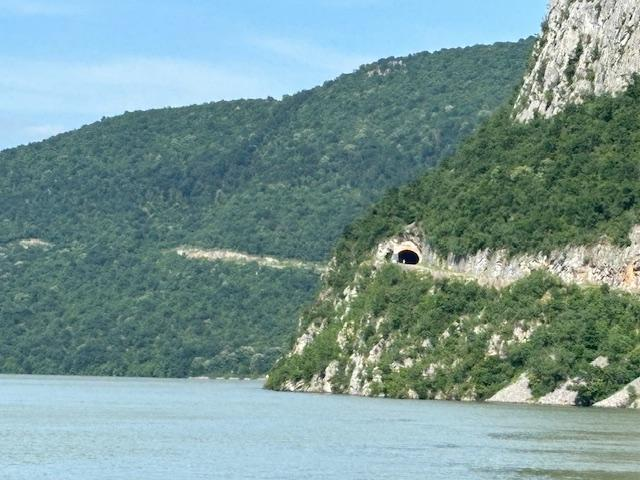
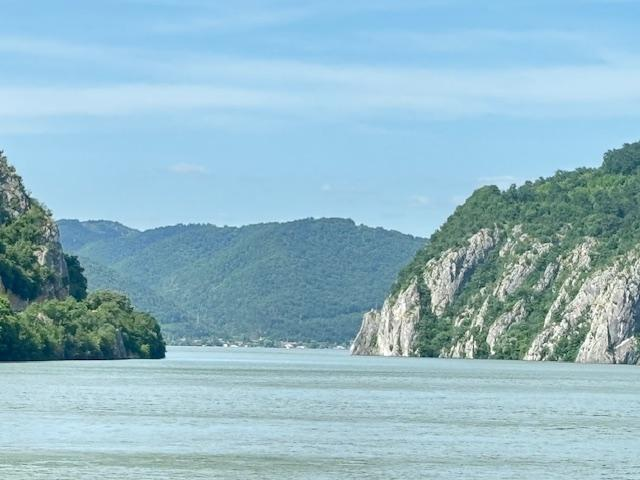
In addition to the beautiful scenery, we saw a rock sculpture of Decebalus, the last king of present-day Romania. Paid for by a private citizen it took 10 years and a dozen sculptors to build. It sits on the Romania side of the water and was finished in 2004. It is positioned directly across from a plaque on the Serbian side of the Gorge commemorating the final defeat of Decebalus in 105 AD. Someone had a sense of humor.
We also saw the Mraconia Monastery, home to travelling monks. The original structure, built between 1453 and 1523 sits is underwater now; the version we see now was completed in 1993. The Monastery used to allow the monks to stay as long as they wished, but so many of them were beginning to make it their summer home the church has begun limiting the monks to 2 weeks max. You can see why they might not want to leave. It’s in a pretty sweet spot.
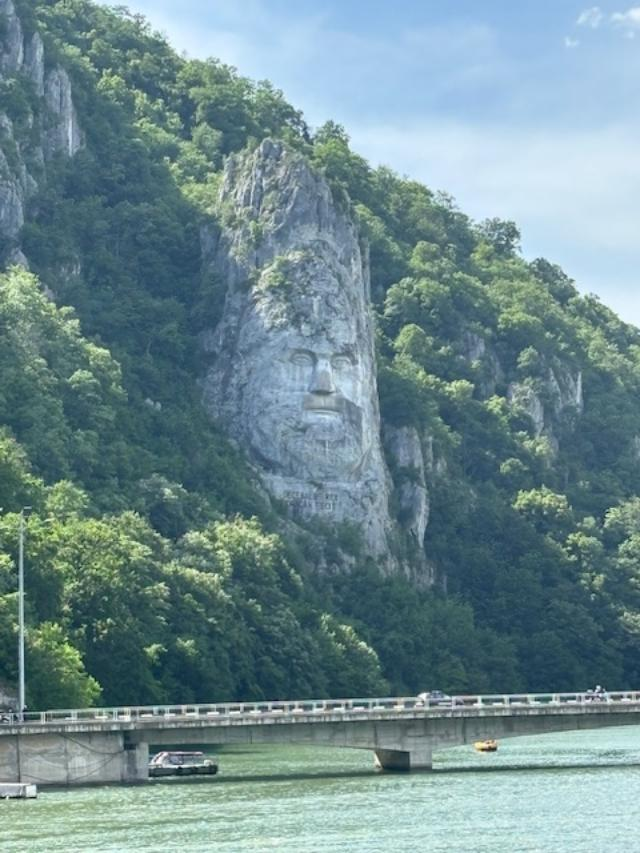
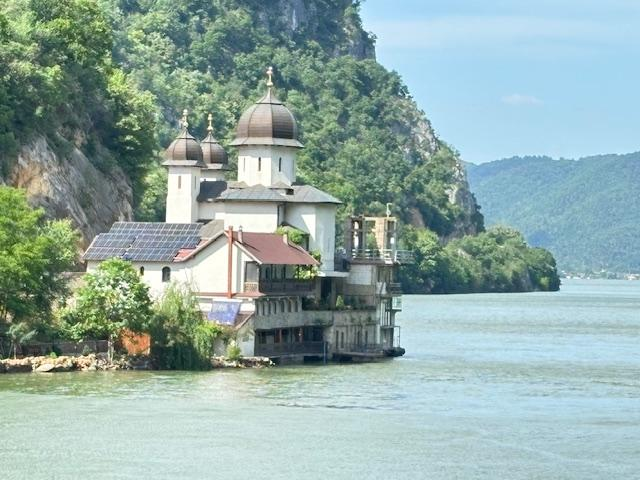
The reason the original church is under water is because of the dams built in 1974 and 1982. The dams were built to address problems of the modern world – river navigation, power needs, etc. – in a time when environmental, cultural, and historical impacts were an afterthought if they were considered at all. The dams built here displaced 17,000 people across seven villages/towns, buried the church underwater, caused the remnants of the monolithic settlement mentioned earlier to be lost, and drove the once prolific Baluga sturgeon (on which many people in the area based their income) to the Black Sea. The largest recorded sturgeon caught in the Danube prior to the dams being built was in 1793. It weighed 1,100 lbs. Fisherman would catch the sturgeon, harvest their eggs leaving plenty to keep the population thriving, and return them to the river. Caviar from these waters was served on the Titanic and in the White House, something this little town of 700 is quite proud of.
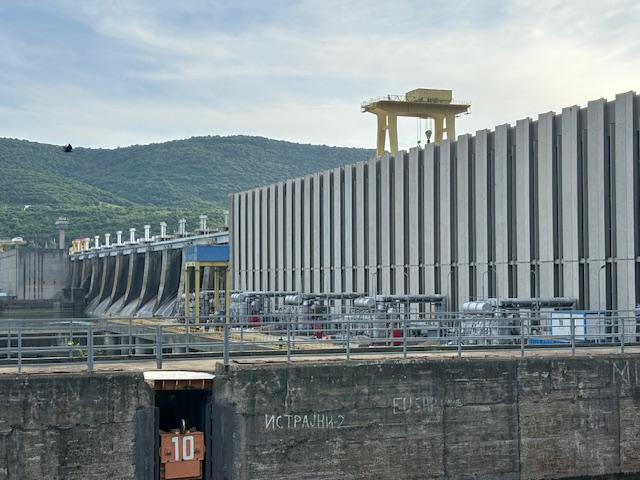
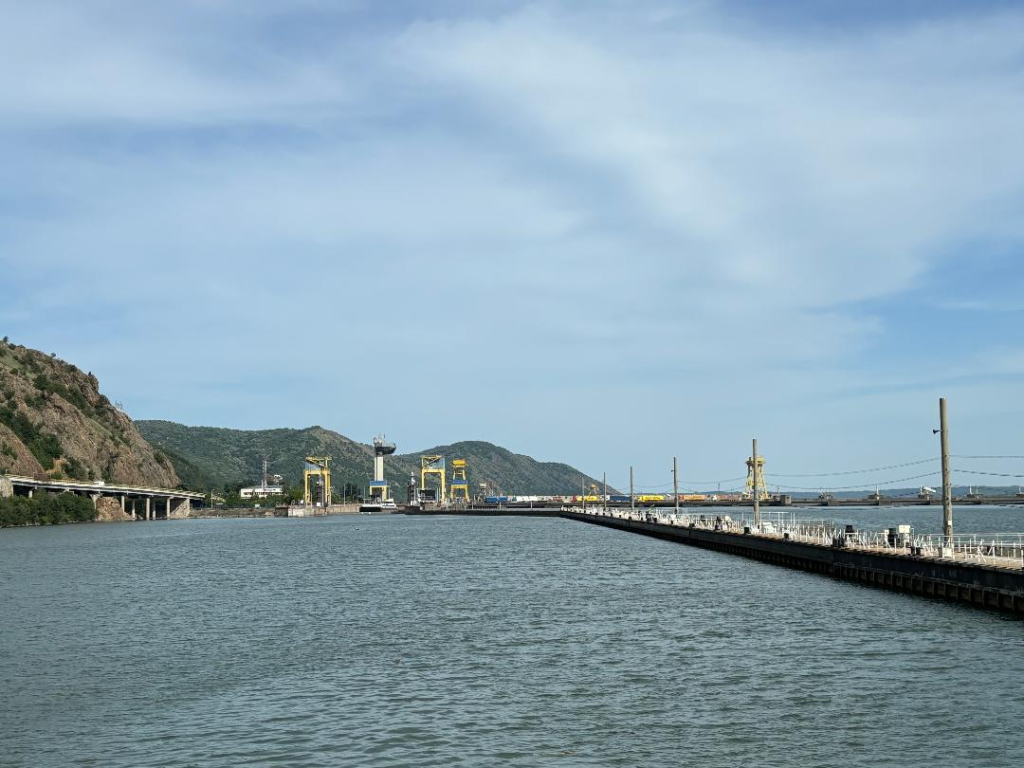
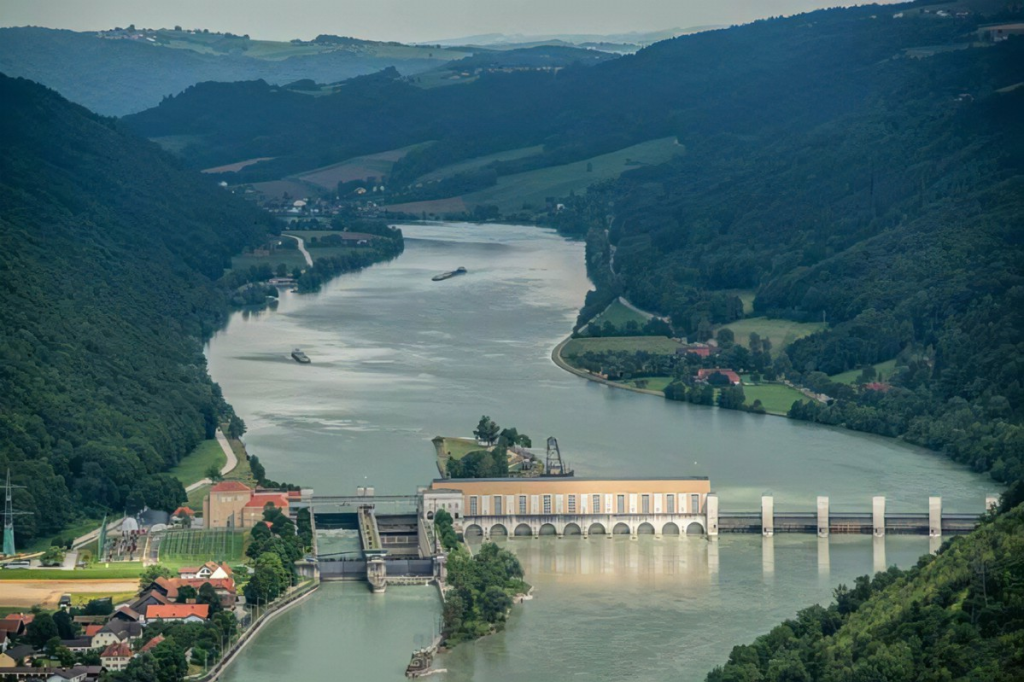
The dams are the largest on the Danube and among the largest hydropower producers in all of Europe. The dams have a combined 16 power generating units, equally divided between Romania and Serbia.
It’s been a full day and no doubt our thighs will be letting us know about it tomorrow!

Beautiful pics Pam and love the history lesson! Hope all is well!
LikeLike